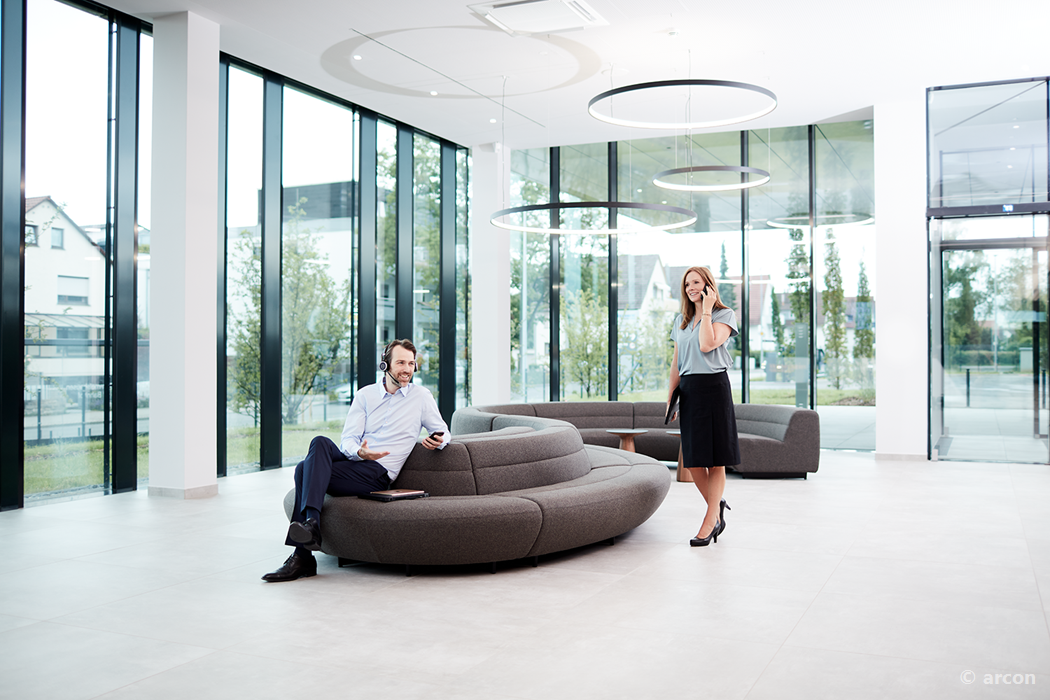Radio Frequency Transparent Glass
Insulating glass for improved reception of mobile-radio data signals in buildings
It’s not always the cellular dead zones that are to be blamed when tablets, smartphones and the like have poor or no reception. Modern thermal insulation glazing too acts like a Faraday cage, blocking a large part of the mobile-radio signals. Sometimes it is not possible to even receive phone calls indoors – let alone use apps or Internet applications – unless there is access to a WLAN.
Yet such glazing and façades are now a necessary component of the statutorily prescribed thermal insulation concepts in office buildings or public institutions. In homes, too, insulating glass with precious metal coatings has long been ensuring reduced heating costs and lower consumption of resources. This is where arconnect® comes in. Thanks to its innovative structure, arconnect® makes conventional insulation glazing permeable to all currently common cellular frequencies, including the new 5G standard. What’s more, with arconnect®, the thermal insulation properties of the insulating glass remain almost completely intact. We have developed this technology in collaboration with the Fraunhofer Institute for Solar Energy Systems (ISE) in Freiburg, Germany.
We’ll be happy to advise you on planning an optimal solution.

Function:
arconnect® is based on an innovative refining process that gives the thermal insulating glass a fine structure that is almost invisible to the human eye. This design enables high transmission values for all cellular frequencies.

Applications:
Façades, windows, roof glazing, noise reduction glazing, winter garden glazing and spandrel glass.
Glass Type:
Mehrscheiben-Isolierglas (Zweifachverglasung, Dreifachverglasung), Verbundsicherheitsglas, Floatglas
Properties:
In double-glazing insulating glass, the transmission values are higher by a factor of 1000 compared to conventional thermal insulation glazing. If a modern triple glazing is used, the transmission improves by a factor of 10,000. The Ug-value changes only minimally, so the thermal insulation properties remain intact and all requirements for a low-energy building are met.
